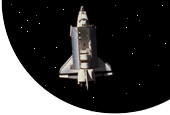Loading |
 |
|
||||||||||||||||||||||||||||||||||||||||||
[MSNBC-updated/corrected] Next spacewalk will have an explosive twist Cosmonauts to remove suspect pyrotechnic device from Soyuz craft http://www.msnbc.msn.com/id/25399516/ By James Oberg, NBC News space analyst // Special to MSNBC updated 11:01 a.m. CT, Wed., July. 2, 2008 // This report was originally published June 26, and has since been updated to reflect new information from NASA and other sources. HOUSTON - Two Russian cosmonauts on the international space station practiced Thursday for a dramatic spacewalk planned in July, which will involve taking an explosive bolt from the exterior of a docked Soyuz spacecraft and bringing it into the station itself. The risky operation is aimed at figuring out why similar bolts on earlier Soyuz spaceships misfired, leading to two rugged, off-course landings over the past year. The cosmonauts hope to avoid similar problems when they use the currently docked Soyuz to return to Earth at the end of their mission in October. One of the most delicate aspects of the July 10 spacewalk will be handling the bolt, which sources say packs twice the explosive force of an M-80 firecracker when ignited. The explosive bolts are designed to break the connections between the spacecraft's crew capsule and its propulsion module during descent. Russian space engineers say the bolts at one particular location failed to work properly during each of the two previous Soyuz landings, in October 2007 and then again this April. As a result, in each case the landing capsule was twisted out of proper orientation and underwent excess heating on unshielded surfaces before tearing loose from the propulsion module and falling to Earth. The July 10 spacewalk is aimed at avoiding a misfire during the next descent.Advance word of plans NASA will preview the plans for the six-hour spacewalk at a July 8 news briefing, but some details already have emerged in the space agency's routine status reports. Space engineers in Houston revealed additional details during private discussions and in e-mails. They declined to be identified because they weren't officially authorized to discuss the plans. The plans call for station commander Sergey Volkov and flight engineer Oleg Konenenko to venture outside the space station at about 2:18 p.m. ET on July 10. Konenenko will perform most of the manual work while Volkov holds him in position at the end of a telescoping boom. At the work site, Konenenko will place shrouds over the Soyuz's small steering thrusters, to protect against any propellant leaks. Next, he will peel back insulation blankets over the particular section where the target bolt is located. The separation structure between the two Soyuz modules consists of five pairs of explosive bolts, interspersed with five pusher springs. The firing of either bolt at any location provides clean separation there. Russian experts have told NASA that the bolts at position 5 apparently failed to fire during both previous Soyuz descents, preventing a clean separation. Volkov will remove one of the explosive bolts in position 5. That operation will open the latching mechanism at that position, thus preventing a jam if the previous events are repeated. The Russians have told NASA that the remaining four latches will be adequate to hold the two modules together during any other maneuvers in space. The bolt will be placed in a shielded safety canister that was shipped up to the station in May for this operation. With its rugged construction and screw-on lid, the box should provide both electrical shielding against static charges that might ignite the bolt, and physical containment if the bolt did somehow fire. The plans call for the bolt to be brought back inside the station at the end of the spacewalk. Engineers in Houston said that, to their knowledge, no such pyrotechnic device has ever been brought into the space station in its 10-year history.
What NASA is doing The station's third crew member, NASA astronaut Greg Chamitoff, will support the spacewalk from inside. He'll likely be sequestered inside the Soyuz — ready to rescue the spacewalkers in case they run into trouble and can't get back inside the station by themselves. At NASA's Johnson Space Center in Houston, engineers have been vigorously developing support plans for the Russian spacewalk. Along with a set of special tools and tethers, the two most critical items now being attached to the Russian Orlan spacesuits are heat-mounted lamps and, for Konenenko, a head-mounted television camera to transmit live images of what he is seeing in the work area. Such images could be crucial for developing the correct response to any unexpected snags the cosmonauts might encounter during a spacewalk task they never practiced for back on Earth. Another spacewalk is planned on July 15, primarily to do previously planned tasks that were set aside for the Soyuz inspection and repair. If all goes as planned, the bolt in its protective canister will be returned to Earth inside the Soyuz when it lands in October. The Russians will study the bolt to determine if the recent failures represented some fabrication flaw or merely random coincidences. The production line for Soyuz spacecraft has been under severe strain since late 2006, due to the need to double production rate in order to support an increased crew size aboard the station beginning next year.
Wrong-way descent The Russians as well as NASA officials have been aware of the Soyuz hardware problem since last October, but it became public knowledge only after last April's dramatic off-course landing of a Soyuz capsule returning from the space station. Rumors began to circulate about a terrifying out-of-alignment plunge through the flames of atmospheric re-entry, a plunge that exposed the Soyuz capsule's less protected surfaces to searing heat. Then word leaked out that this dramatic descent was actually a replay of the previous landing. The Russians insist that even though the explosive bolts failed to fire, they eventually tore loose as they were designed to do — and in each case, the Soyuz righted itself and settled into the proper orientation. By that time, however, the craft’s autopilot had been so thoroughly confused that it abandoned the planned "guided descent" that rolls the capsule left or right to aim it toward the desired landing point. Instead, it descended more steeply, subjecting the crew members to G-forces that were much higher than expected. Pictures taken after April's landing showed the Soyuz with its nose-mounted thruster pod burned through and severely scorched. This probably reflected the thermal damage from the initial wrong-way-forward plunge, although the Russians have yet to confirm this. |
home | profile | articles | books | lectures | jim speaks | humor
links | email
Copyright 2010 James Oberg. All Rights Reserved
Site Designed and Maintained by YoeYo.com
